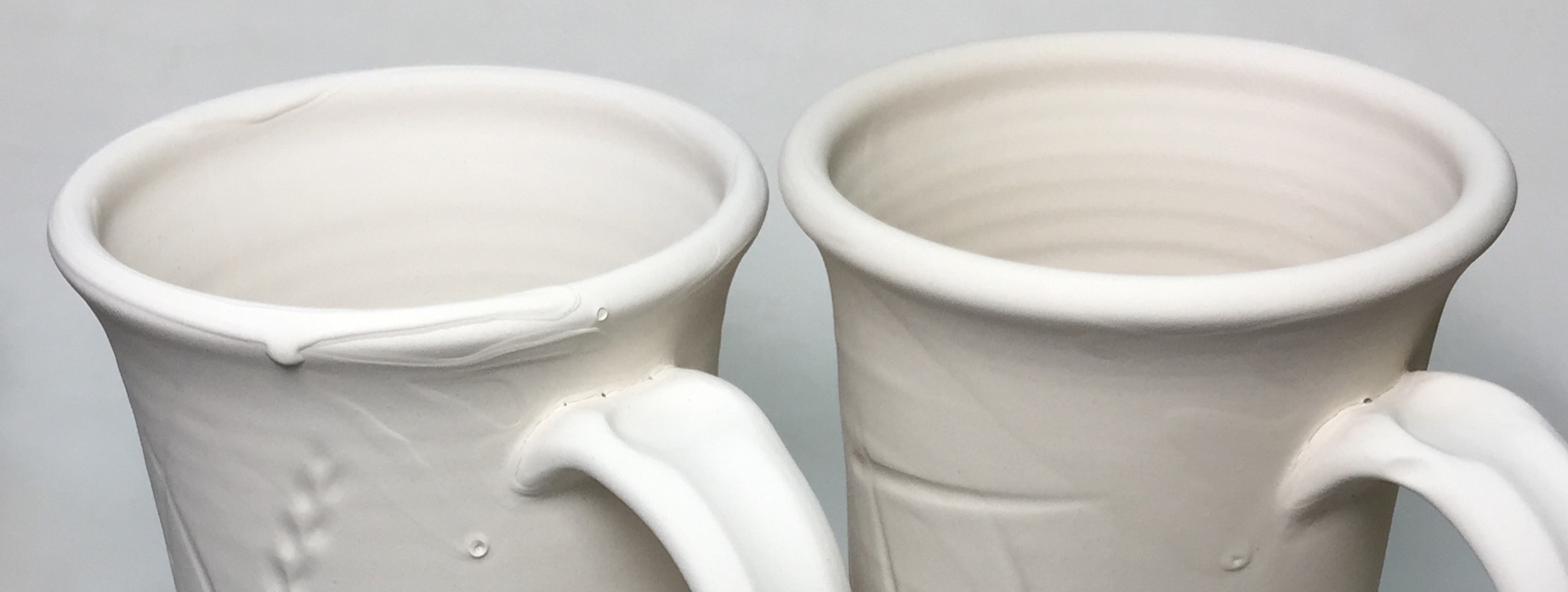| Monthly Tech-Tip | No tracking! No ads! |
What to do when glazes drain and drip like this
These are the same dipping glaze, it is variegated and drips look ugly on fired ware. The slurry of the one on the left had a specific gravity of 1.45, it was creamy and appeared to be good. However, when this bisque porcelain mug was pulled out after the dip and rolled it formed drips on the rim. Why fix the slurry instead of just rubbing this out? Keep reading. To fix this I added water to decrease the specific gravity to 1.43. Then I added Epsom salts to induce thixotropy and gel it back to a creamy consistency. This time it went on evenly. Although the piece dries enough to handle in less than 30 seconds, it does take longer to dry completely because there is more water in the slurry. Adding CMC gum would also slow down drying but it would be very tricky to get just the right amount (otherwise dripping could be worse than this). Consider a few of the advantages of thixotropic dipping glazes: They don't settle like a rock in the bucket, they don't go on too thick or in multiple thicknesses, they don't drip and they don't dry too fast.
Videos
Links
| Materials |
CMC Gum
CMC gum is indispensable for many types of ceramic glazes. It is a glue and is mainly used to slow drying and improve adhesion and dry hardness. |
| Glossary |
Thixotropy
Thixotropy is a property of ceramic slurries of high water content. Thixotropic suspensions flow when moving but gel after sitting (for a few moments more depending on application). This phenomenon is helpful in getting even, drip-free glaze coverage. |
| Glossary |
Specific gravity
In ceramics, the specific gravity of slurries tells us their water-to-solids ratio. That ratio is a key indicator of performance and enabler of consistency. |
Got a Question?
Buy me a coffee and we can talk

https://digitalfire.com, All Rights Reserved
Privacy Policy

